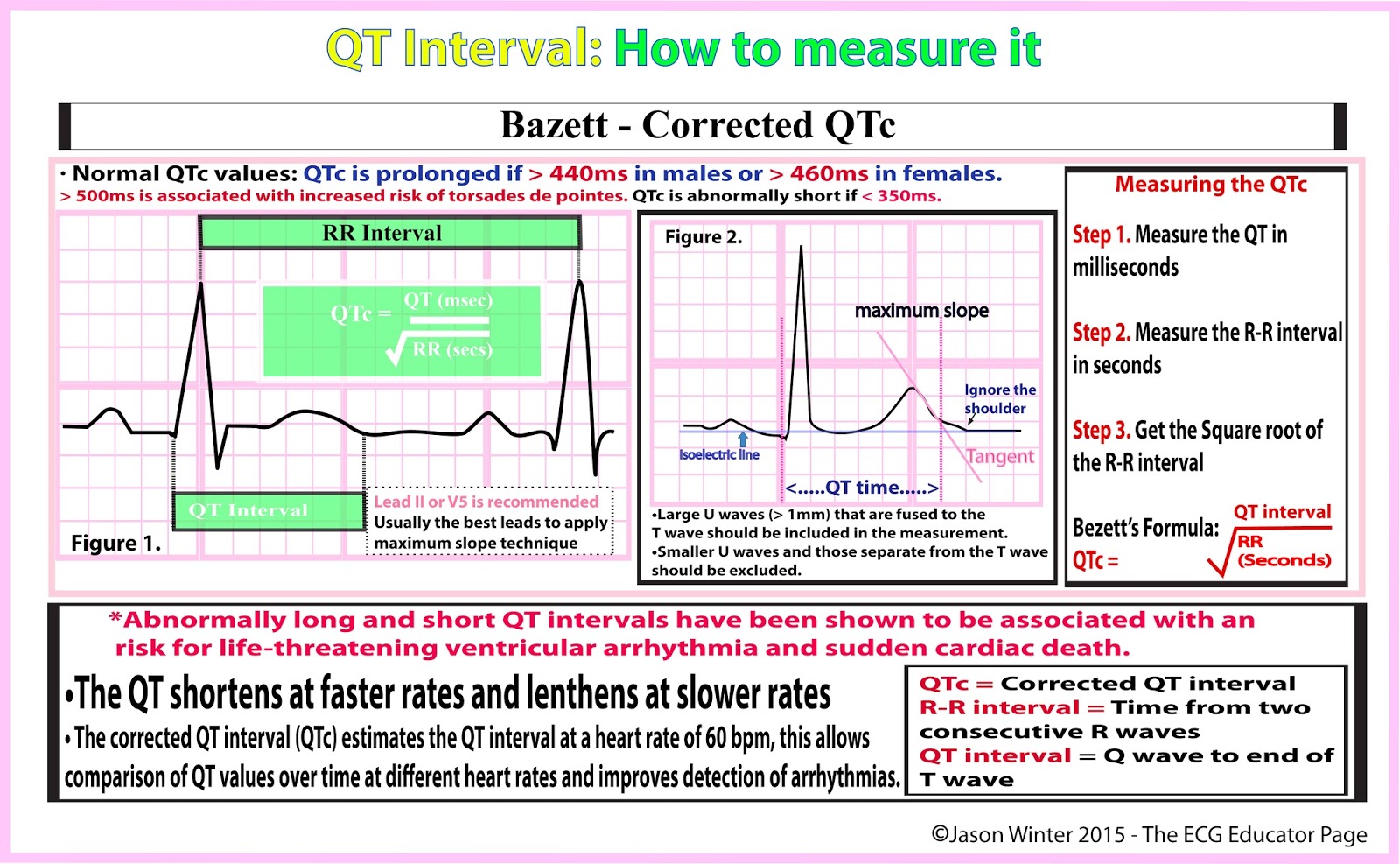Qtc Interval Calculator Formula

Qt corrected bazett formula interval calculator.
Qtc interval calculator formula. The qt shortens at faster heart rates. Qtc qt 1 75 hr 60 where. Online medical calculator to measure the qt corrected qtc interval using bazett equation. This calculator corrects the qt to the qt at a heart rate of 60.
The qt lengthens at slower heart rates. Determining the corrected qt interval can allow practitioners to compare qt values over time at a variety of heart rates. This calculator corrects the qt to the qt at a heart rate of 60. The qt c calculator is designed to compute the corrected qt interval which is an estimation of the qt interval when a heart is beating at a rate of 60 bpm.
The qtc calculator is based on heart rate pulse rate in beats per minute and qt interval either in seconds or miliseconds. Qtc corrected qt. The formula of bazett was based on the observations of a 1920 study. Qtc bazett calculator is mainly used for clinical calculations.
Calculator qt corrected bazett formula interval. A prolonged qt interval is associated with an increased risk of torsade de pointes. Heart rate is defined as the number of subsequent contractions of the heart during one minute in which blood is pumped from the ventricles to the arteries. Online medical calculator to measure the qt corrected qtc interval using bazett equation.
Qtc bazett calculator is mainly used for clinical calculations. As agreed upon by acc hrs the normal qtc interval is below 450 milliseconds for men and below 460 milliseconds for women. Hr heart rate in beats per minute. The most commonly used formula for qt correction is the bazett formula named after henry cuthbert bazett 1885 1950 a physiologist who invented it to calculate the heart rate corrected interval qtcb of qt.
Moreover it returns the qt corrected interval expressed in both seconds and milliseconds. Cardiology calculators formulas list online. Online medical calculator to measure the qt corrected qtc interval using bazett equation. Qtc qt rr where.
Bazett s formula looks like this. The most common equation used for qt interval correction all around the world is a formula presented by physiologist henry cuthbert bazett in the article an analysis of the time relations of electrocardiograms published in 1920 in the heart journal.














